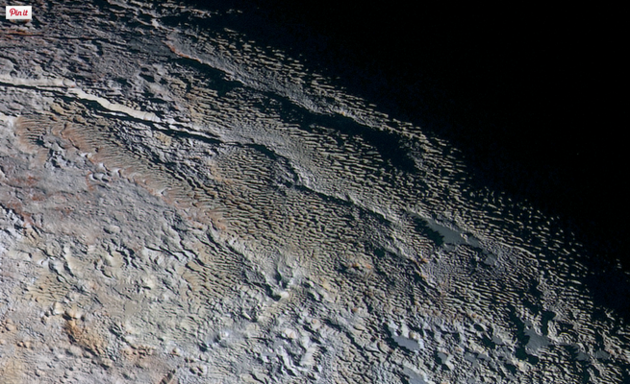-
Tips for becoming a good boxer - November 6, 2020
-
7 expert tips for making your hens night a memorable one - November 6, 2020
-
5 reasons to host your Christmas party on a cruise boat - November 6, 2020
-
What to do when you’re charged with a crime - November 6, 2020
-
Should you get one or multiple dogs? Here’s all you need to know - November 3, 2020
-
A Guide: How to Build Your Very Own Magic Mirror - February 14, 2019
-
Our Top Inspirational Baseball Stars - November 24, 2018
-
Five Tech Tools That Will Help You Turn Your Blog into a Business - November 24, 2018
-
How to Indulge on Vacation without Expanding Your Waist - November 9, 2018
-
5 Strategies for Businesses to Appeal to Today’s Increasingly Mobile-Crazed Customers - November 9, 2018
New ‘Dragon-Scale’ Pluto Images From New Horizons Telescope Stun Astronomers
“Pluto’s surface sports a remarkable range of subtle colors, enhanced in this view to a rainbow of pale blues, yellows, oranges, and deep reds”, said NASA.
Advertisement
The full-res, 67.5 mb photo-which you can download here- is tens of millions of pixels of incredible detail.
The thing that is most exciting regarding this image is that planetary scientists have just a vague idea as to what might be taking place.
The image showing an apparent plastic flow of material along some of the polygonal “fault” lines or trenches in the predominantly nitrogen ice cap of Sputnik Planum is shown below. Ahigher resolution image of the plain shows that its apparently smooth surface is in fact marked with pits and ridges, at odds with the seemingly pristine image presented from afar. What’s more, unlike the usual black-and-white photos of Pluto we’re used to seeing, this latest set reveals Pluto in stunning colour. The peaks themselves appear rounded and oddly textured.
“It’s a unique and perplexing landscape stretching over hundreds of miles”, said William McKinnon, a member of the New Horizons Geology, Geophysics and Imaging team.
“Either Pluto had a thicker atmosphere in the past, or some process we haven’t figured out is at work”.
Seen from above, the ice seems to close in around the jagged mountains, resembling the embayments in the sea ice that surrounds Antarctica.
The suspected dunes are even clearer now, and odd linear features and possible gullies pop out in the extended, enhanced color.
A close-up image of the planet’s icy mountains in the equatorial region.
The images provide an incredible level of detail. What has caused them is something that scientists have yet to figure out. Data has thus far only been downlinked for a small portion of the world. Sputnik Planum has plenty of the stuff, except along the mountains on the west flank of the region.
An infrared spectrometer aboard New Horizons mapped concentrations of methane on the dwarf planet, and the results show an uneven distribution. But it’s hard to know which way the causation goes.
Advertisement
Scientists do not yet know whether the methane somehow favors the brighter areas or if the ice makes the regions bright to begin with.




























